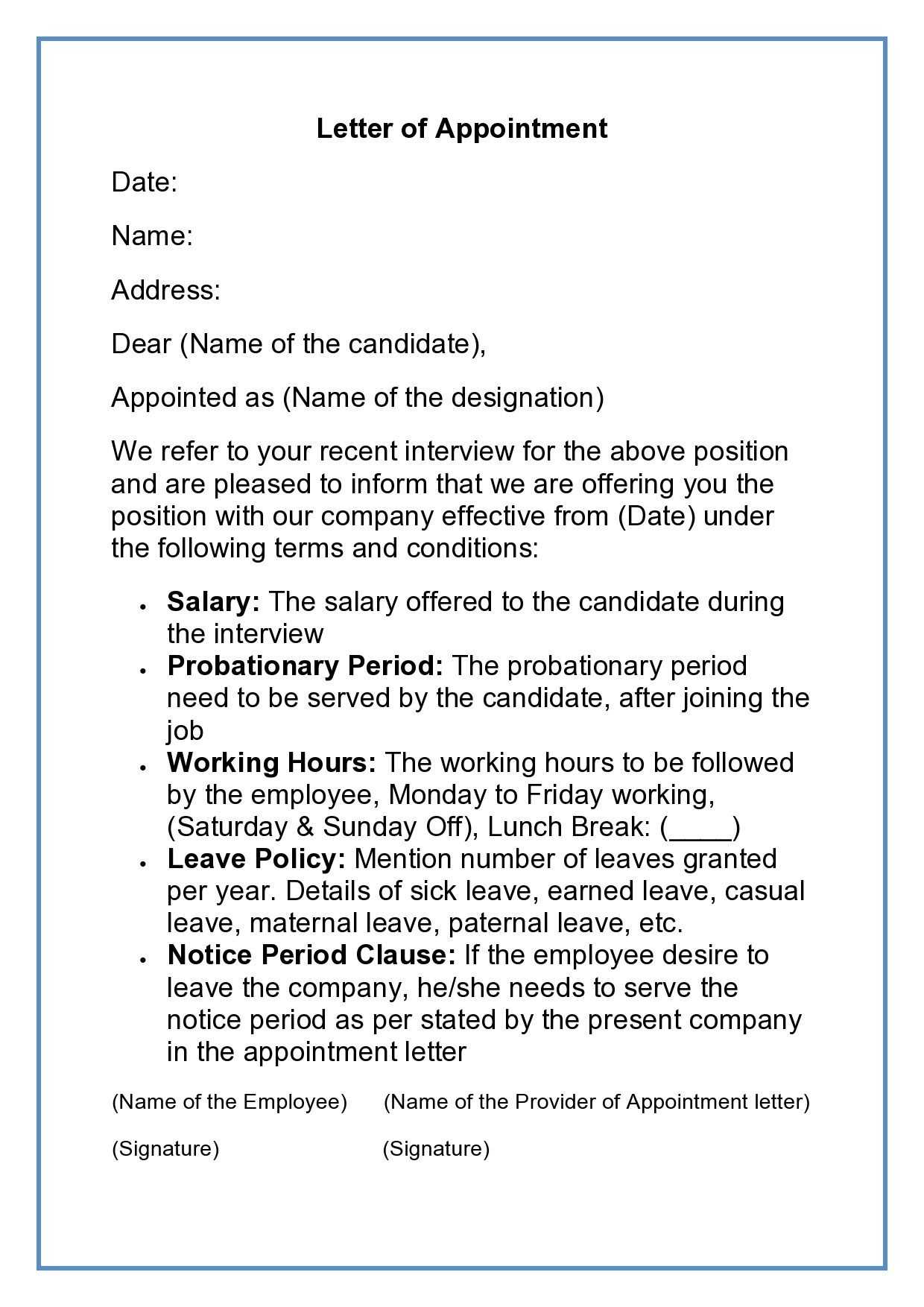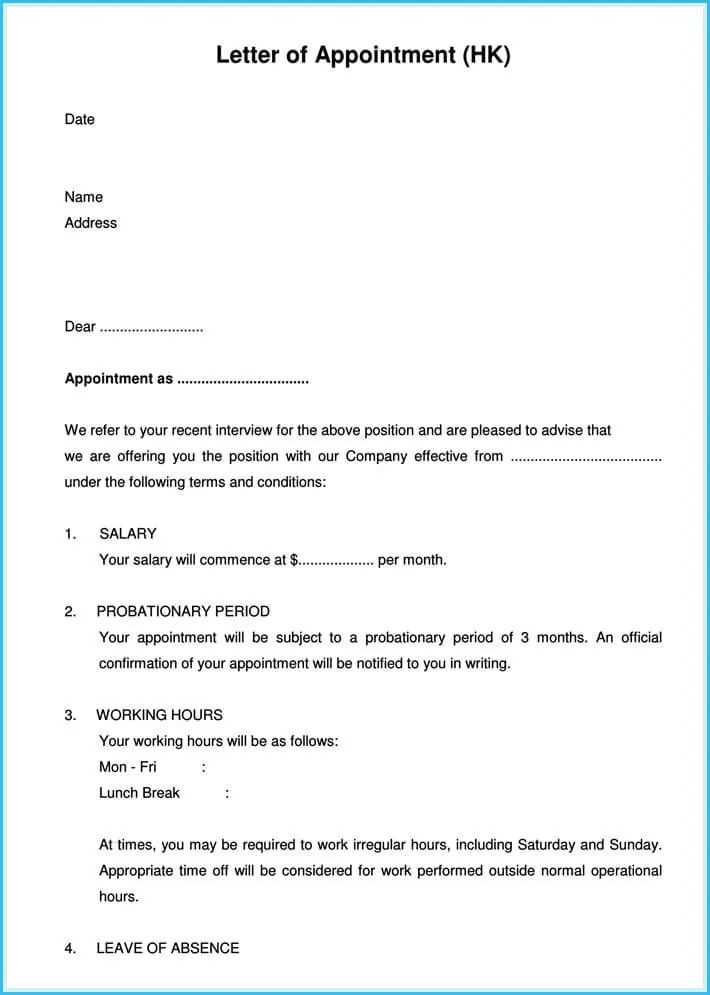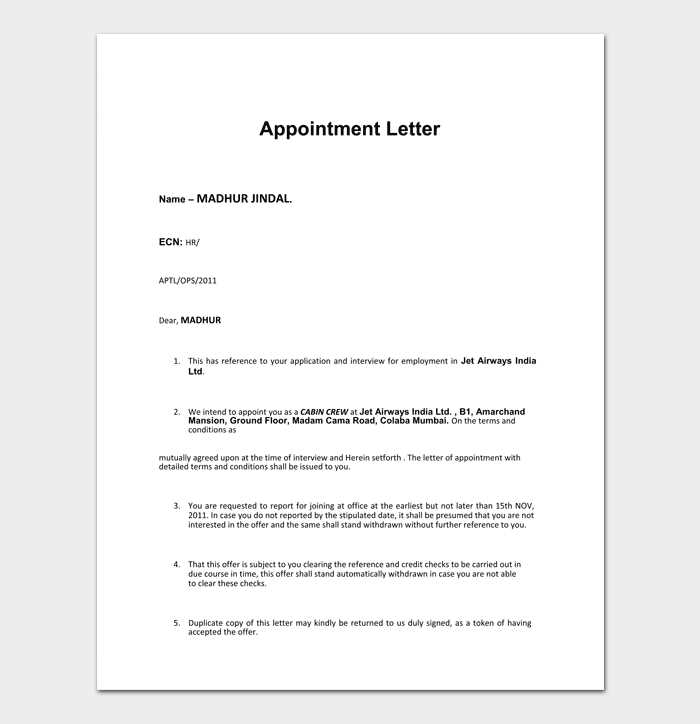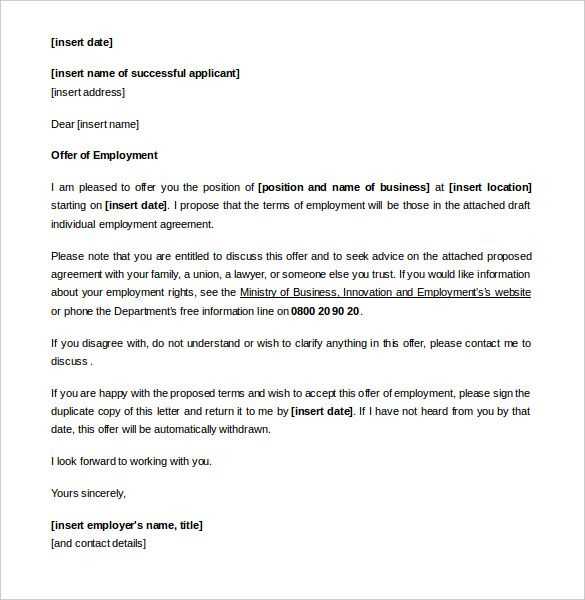Free Appointment Letter Template for Easy Customization

When bringing a new individual into your team, it’s important to communicate the terms of their role clearly. A well-structured document outlining the details of their position helps establish mutual understanding. Providing a customizable model for this purpose simplifies the process, ensuring all essential points are covered while saving time and effort.
Essential Elements to Include

To ensure clarity and professionalism, certain components should be included in any formal communication to a new recruit:
- Position Details: Clearly specify the job title and the main responsibilities associated with the role.
- Employment Terms: Mention the working hours, salary, and any benefits associated with the position.
- Start Date: Include the exact date the individual is expected to begin their new role.
- Reporting Structure: Indicate the supervisor or manager to whom the person will report.
- Legal Considerations: Ensure all necessary legal requirements, including confidentiality agreements or non-disclosure clauses, are addressed.
Why a Standardized Document Helps

Using a standardized model helps streamline the hiring process and ensures consistency. It allows employers to quickly prepare the necessary documents without missing key information. Additionally, a clear and professional format gives a positive impression to the new recruit, making them feel respected and valued.
Customizing the Document for Specific Needs
While a general framework is helpful, it’s important to customize the content to fit the specific role or organization. Tailoring the document ensures that it meets all legal and company-specific requirements while addressing any unique aspects of the position. For instance, adjusting clauses related to probation periods or unique job duties can further personalize the communication.
Streamlining the Process
By utilizing an easy-to-edit framework, employers can reduce administrative work and focus on other aspects of onboarding. This efficiency can contribute to a smoother transition for the new hire and help establish a professional relationship right from the start.
Creating an Effective Document for New Hires
Ensuring that new team members understand their role and responsibilities clearly is crucial. Providing a well-structured document that outlines the terms of employment helps set clear expectations and fosters a professional relationship from the start. Using a carefully designed model makes this process more efficient and error-free.
Why Use a Structured Model for Official Documents
Utilizing a standardized framework for communicating essential details ensures that all important information is included without omissions. It also reduces the likelihood of overlooking key aspects, such as job expectations, compensation, and legal requirements, which are crucial for both employer and employee. A structured approach also promotes consistency across all communications with new recruits.
Understanding Key Components of the Document
The main sections to focus on include the job title, key responsibilities, salary, and work schedule. Including information on reporting structure, legal obligations, and any confidentiality agreements is also necessary. Each section should be clearly articulated to avoid misunderstandings and to ensure that the employee knows exactly what is expected.
How Using a Model Saves Time and Effort: A standardized model allows businesses to prepare these documents quickly without starting from scratch every time. It also enables employers to focus on more critical tasks, such as the onboarding process, while still delivering a professional and comprehensive communication.
Avoiding Common Mistakes in Official Communications

One common mistake is leaving out crucial details or using unclear language, which can cause confusion. Another issue is failing to tailor the content to the specific position or organization, which can lead to irrelevant or incomplete information. Proofreading and customization are vital to ensure that the document is accurate and relevant.
Customizing the Document for Greater Effect: Personalizing the framework ensures that it meets specific needs and addresses the unique aspects of the role. Customization might include adding company-specific terms, adjusting clauses for probation periods, or including personalized welcome messages. A tailored document increases the document’s relevance, making it more impactful for the recipient.